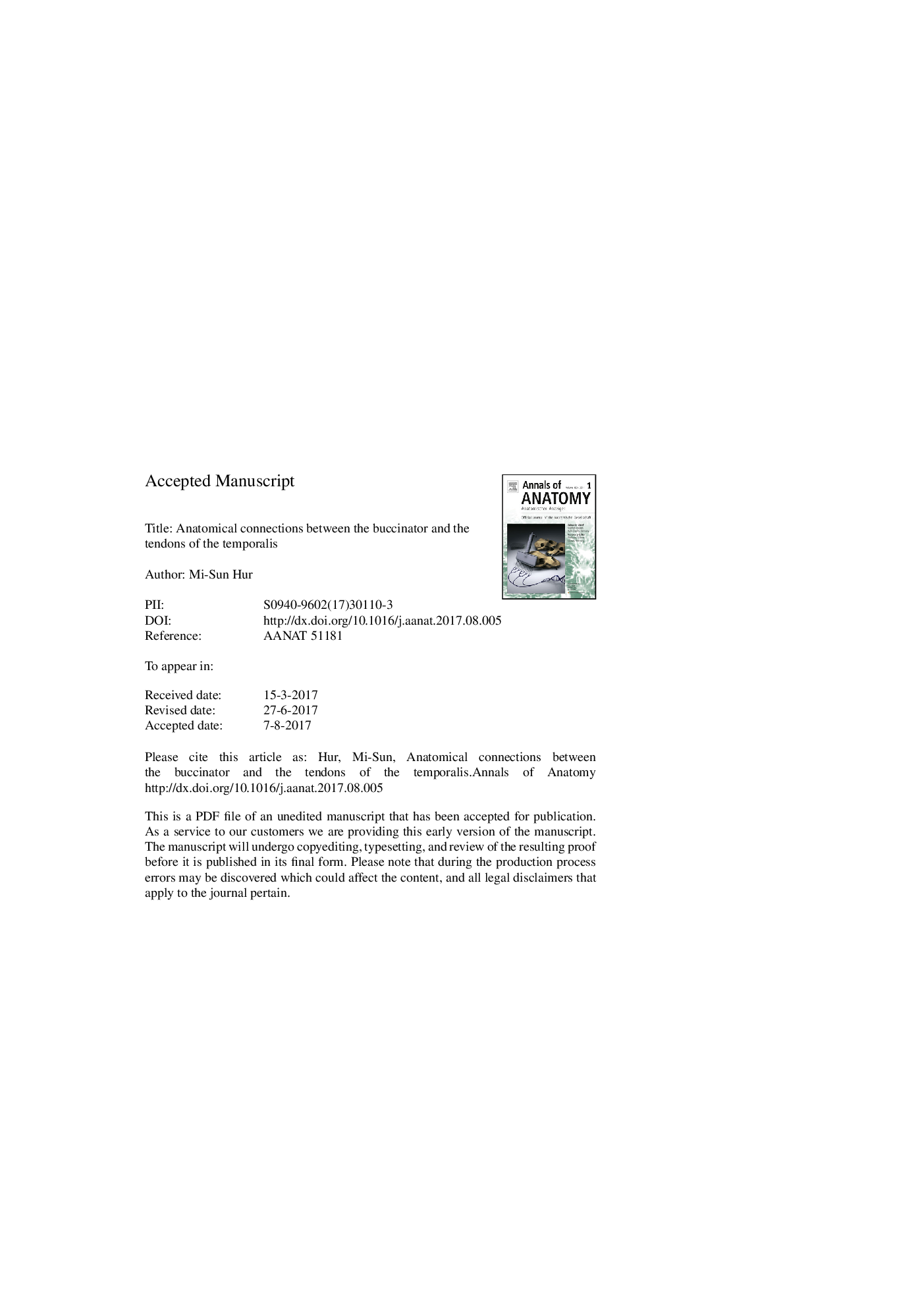| Article ID | Journal | Published Year | Pages | File Type |
|---|---|---|---|---|
| 8460395 | Annals of Anatomy - Anatomischer Anzeiger | 2017 | 17 Pages |
Abstract
The aim of this study was to clarify the anatomical relationship between the buccinator and the temporalis in order to improve understanding of the precise and coordinated movements of the mouth and the mandible. The buccinator and the temporalis were investigated in 72 hemifaces from Korean cadavers. Removing the buccal fat pad from the buccinator revealed that the fascia encircled the space between the superficial and deep tendons of the temporalis laterally, and the external surface of the buccinator medially in all specimens (100%). The fascia was located between the buccinator and the tendons of the temporalis, thereby connecting these two muscles. The fascial space was filled with connective tissue, and the buccal nerve and artery passed through this space. The inferior fibers of the buccinator arose from the anterior portion of the deep tendon of the temporalis in all specimens (100%). The anterior portion of the deep tendon of the temporalis extended forward obliquely between the ramus and body of the mandible. Thus, both the anterior portion of the deep tendon of the temporalis and its attaching inferior muscle fibers of the buccinator coursed obliquely. The above observations indicate that the connecting fascia between the buccinator and tendons of the temporalis and the inferior fibers of the buccinator that were attached to the deep tendon of the temporalis could assist in coordinatation of the movements of the mandibular region and the mouth angle in the timing and strength of contraction of the muscles during mastication, facial expression, and speech.
Keywords
Related Topics
Life Sciences
Biochemistry, Genetics and Molecular Biology
Cell Biology
Authors
Mi-Sun Hur,
